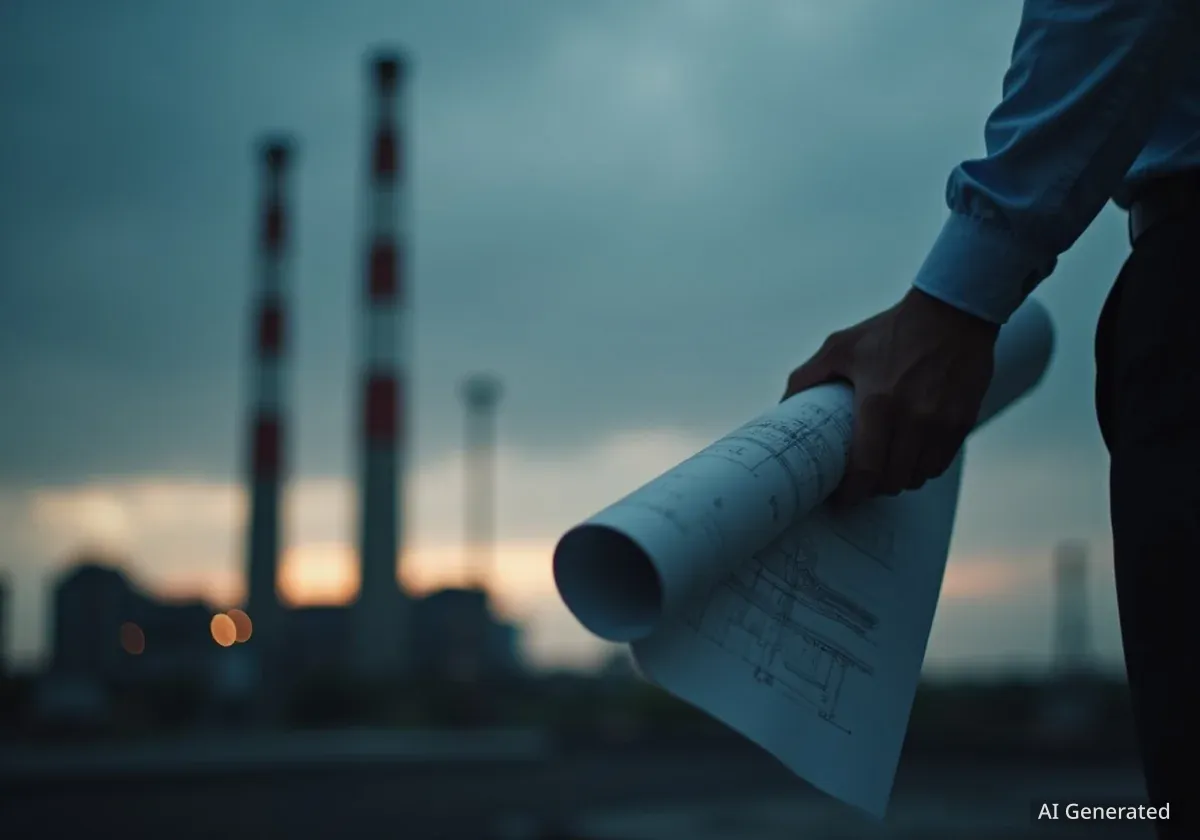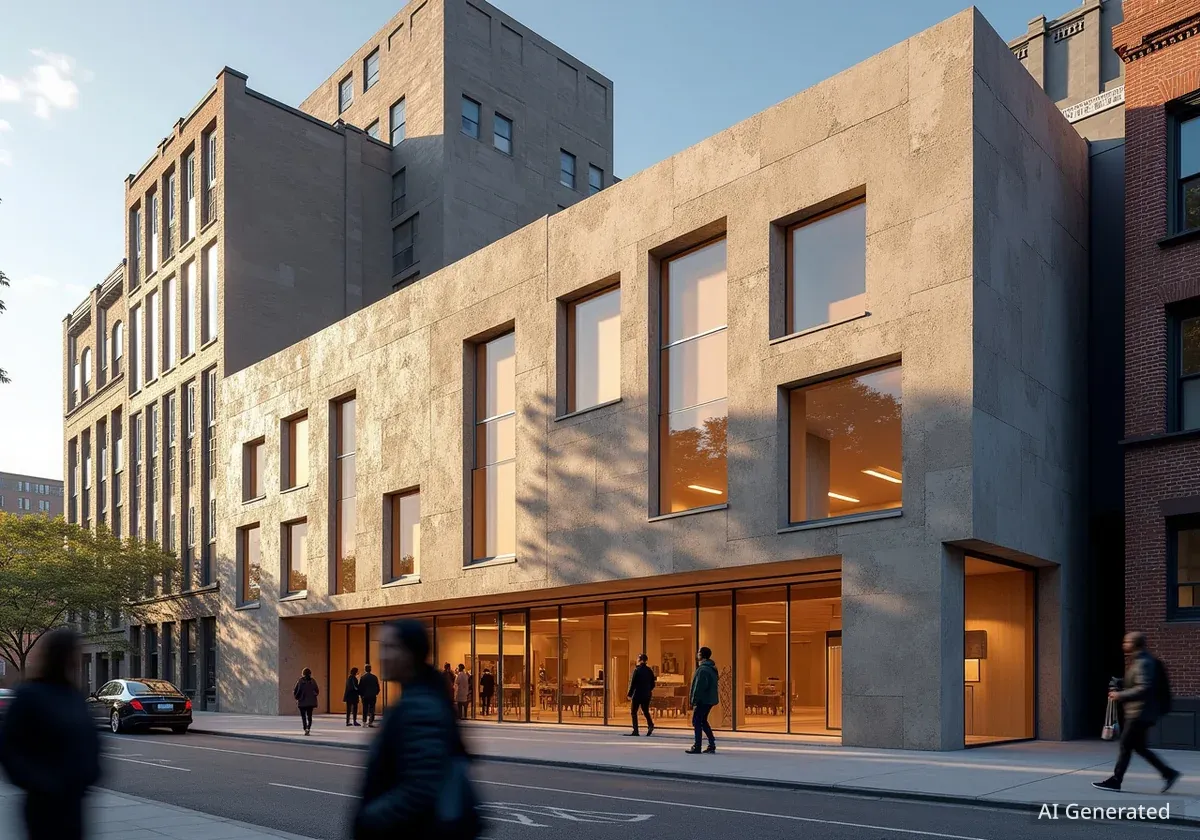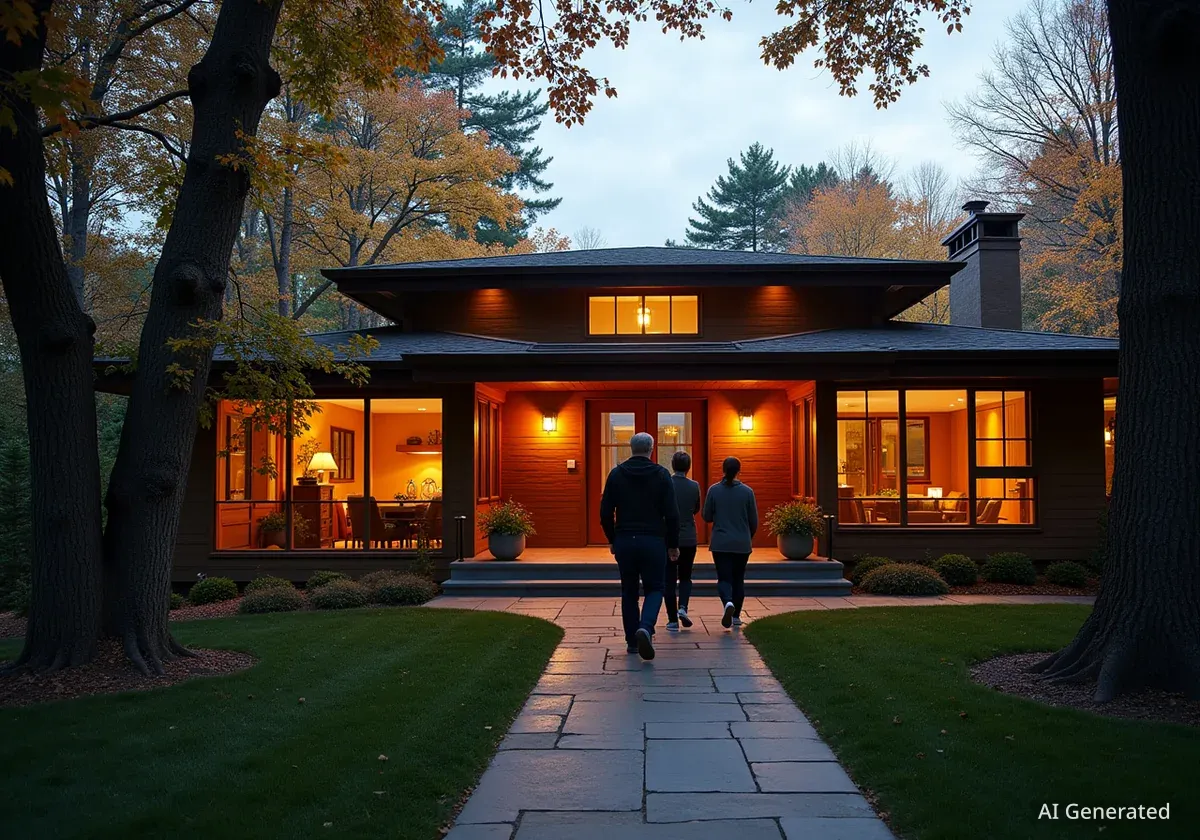A local architect has presented a detailed proposal to save and repurpose the three iconic smokestacks at Bridgeport's former South End power plant, which are slated for demolition. Mark Halstead's vision reimagines the industrial structures as central features of a modern redevelopment, sparking a debate over the city's industrial heritage and its future.
Key Takeaways
- Architect Mark Halstead created renderings to incorporate Bridgeport's three power plant smokestacks into a new development.
- The new owner, Bridgeport Station Development, plans to demolish the stacks in the spring, citing high maintenance costs.
- The community is divided, with some viewing the stacks as landmarks and others as symbols of past pollution.
- Halstead's proposal includes a residential and hotel complex, turning the main 'candy cane' stack into a city beacon.
An Architect's Vision for an Industrial Landmark
For nearly 40 years, architect Mark Halstead has shaped residential and commercial spaces. Now, he is turning his attention to a structure he once disliked: the 500-foot red-and-white smokestack on Bridgeport's waterfront. With its demolition planned, Halstead has developed and shared a series of renderings that offer an alternative future.
His concept integrates all three smokestacks into a modern, mixed-use complex. The proposed design features a two-building apartment and hotel facility built around the historic towers. The most prominent stack, known locally as the 'candy cane,' would be transformed into a welcoming sign for the city, displaying the words "Bridgeport" and "BPT" vertically.
"It has so much potential," Halstead stated. "Make it something that looks clean and beautiful, rather than old and smoky. A beacon that says, 'We're Bridgeport, welcome, come see.'"
Halstead, a Bridgeport native who now resides in Fairfield, explained that the idea came to him during a quiet evening. "I just had some night with nothing to do, so I just kept drawing," he recalled. His goal is to inspire a conversation about preserving a piece of the city's identity while embracing progress.
A Towering Presence
The main red-and-white striped smokestack stands at 500 feet. According to architect Mark Halstead, it is the tallest structure along the coastline between New York City and Boston, making it a significant navigational and visual landmark.
Developer Cites Practical Obstacles
Despite the creative proposal, the current owner of the site, Bridgeport Station Development, maintains that demolition is the most practical course of action. The main power plant facility is set for demolition on September 28, with the three smokestacks scheduled to be taken down next spring, likely in April.
Chad Parks, a partner with the development firm, has outlined the primary reasons for removing the stacks. He emphasized the significant ongoing maintenance costs required to keep the structures safe. Furthermore, removing the towers at a later date, after new buildings are constructed around them, would be substantially more complex and expensive.
"There's obviously no reuse for the stack," Parks said in a previous statement. He acknowledged the sentimental value for some but suggested the majority favor removal.
The Cost of Preservation
Halstead acknowledges the financial challenges his proposal presents. "I know there's a lot of work involved," he admitted. "I don't kid myself. The ongoing maintenance, painting, if you do lighting and such. There's costs with that, yes." However, he argues that the investment would provide a long-term benefit to the city's image and identity.
A Community Divided by Symbolism
The debate over the smokestacks extends deep into the Bridgeport community, where residents hold conflicting views. For some, the towers are an inseparable part of the skyline, a landmark that defines the city's harbor. For others, they are a painful reminder of industrial pollution and its health consequences.
A Legacy of Industry
The now-shuttered facility was a coal-fired power plant for decades. Its operation has been linked to health issues in the surrounding South End neighborhood, particularly impacting communities of color and low-income residents. This history complicates the narrative of preserving its structures as purely historical landmarks.
Constance Vickers, deputy chief of staff for Mayor Joe Ganim, expressed this dual sentiment. While admitting a sense of nostalgia for the red-and-white tower, she confirmed the city's position that preservation is not feasible. "In theory we're all going to miss it. It's a big part of the Bridgeport skyline," Vickers said.
However, she also highlighted the negative legacy. "That plant hurt the health of a lot of South End residents," she explained. "While it's a symbol of nostalgia, it's also a symbol of how industry impacts poor communities, especially communities of color."
According to Chad Parks of Bridgeport Station Development, public opinion leans heavily toward demolition. "The only reason it would stay is if people wanted it to stay, (and) I'd say close to 80 percent want it down. The other 20 percent just kind of like it as an icon," he estimated.
From Industrial Past to Modern Icon
Halstead argues that saving the smokestacks does not mean ignoring their past. Instead, he sees it as an opportunity to redefine their meaning. By repurposing them, the city could create a powerful symbol of transformation.
"We had an industrial past that built this city. Now we're looking for new things," he said. "This is a symbol of the old industrial era of Bridgeport coming into a new age."
This approach, known as adaptive reuse, has been successfully implemented elsewhere. A notable example is a former power plant in Savannah, Georgia, which was renovated into a J.W. Marriott hotel that opened in 2020. The hotel proudly features its original towering smokestacks, blending historical industry with modern luxury.
Halstead's renderings present a similar path for Bridgeport, one where the remnants of an industrial economy are not erased but are instead integrated into a new chapter of residential and commercial life. The discussion he has started on social media continues to fuel the debate over what should be preserved, what should be demolished, and how Bridgeport should define its skyline for generations to come.




